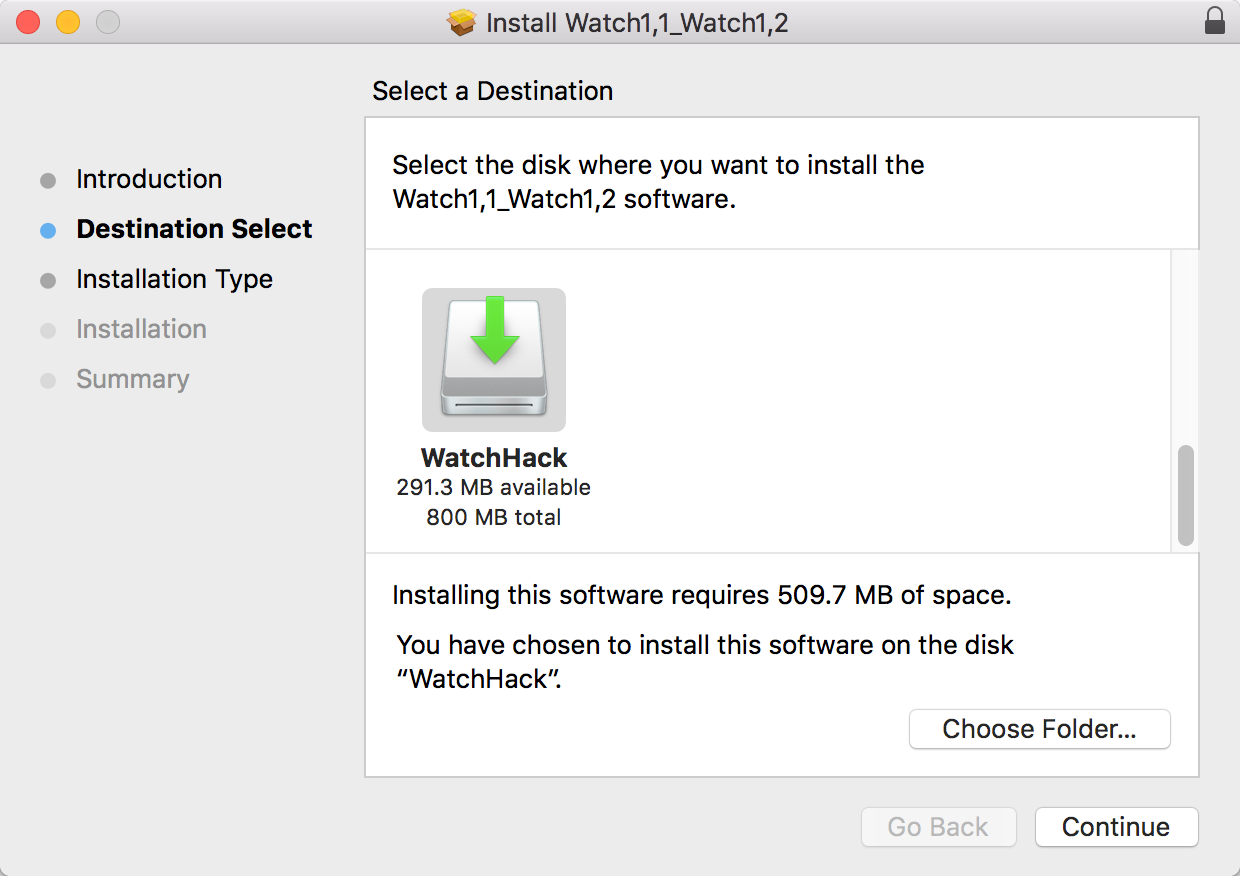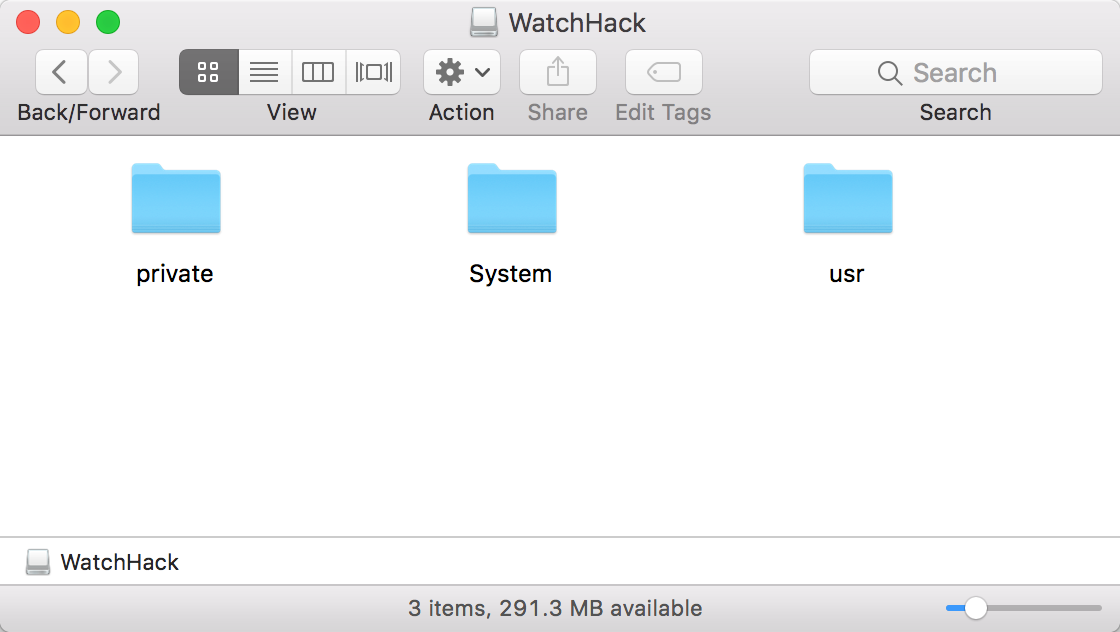For months I have been plagued by Xcode’s persistent failure to successfully install WatchOS device support on my Mac. If I open Xcode, and my iPhone (paired with an Apple Watch) is attached to the Mac, I am greeted by a progress indicator such as this:
![]()
Because I don’t actually do any watchOS development, this has mostly been a mild annoyance. The bug doesn’t seem to affect the performance of my Mac, and other actions I perform in Xcode continue without delay. However, for those of you who are actually doing Watch development, if you run into this problem, you’ll be perpetually greeted by this error when you try to debug on a real device:

The worst side-effect of this bug for me, and the problem that finally encouraged me to hunker down and solve the issue, is the fact that each attempt to “Install Symbols” is associated with a fresh download of a larger-than-200MB file from Apple to my Mac. This is no big deal on my home network, but when I’m roaming and tethered to my bandwidth-metered iPhone, it can lead to costly overage charges.
I’ve been to hell and back tracking down exactly how Xcode installs these symbols, where it fails, and how to work around the problem. I’ll give an overview of how Xcode’s symbol installation process works, and walk you through one concrete method for working around the problem, getting those precious symbols installed, and breaking the cycle of perpetual failed installations.
Symbol Installation Overview
First I want to give you a high level idea of how Xcode downloads and installs symbols. Here are the steps that take place:
- A device suitable for development is connected.
- Xcode looks for existing symbols in the suitable home directory location
- If symbols are not already installed, the symbol-installation process begins.
- A disk image file containing the required materials is downloaded to a temporary folder.
- The disk image file is copied to a Caches subfolder in your home directory.
- The disk image is mounted at a temporary location on your Mac
- A macOS Installer package on the disk image is used to install symbol files directly into your home folder.
- The temporary disk image is unmounted.
- The cached disk image file is deleted.
In my tests, the failure to successfully install watchOS symbols broke down in step 7, where the package is supposed to successfully copy symbol files into my home folder. I was able to determine that the Apple infrastructure responsible for the installation is failing on my Mac with a cryptic authentication error:
Could not download and install Symbols for watchOS 3.1 (14S471). Authorization is required to install the packages
The failure is not happening in Xcode per se, but in a helper tool that is part of the private PackageKit.framework. I filed Radar #29568241, in the hopes that somebody at Apple will have insight as the root cause of the problem, and how it can be fixed for good in either Xcode, or in the configurations of affected users’ Macs.
Fix It Yourself
To manually accomplish what Xcode is failing to do, we need to:
- Get a copy of the downloaded disk image.
- Copy the pertinent files out of the disk image’s installer package.
- Copy the pertinent files into the correct installation path in ~/Library/Developer/Xcode/
Because simply creating the directory at the installation path is enough to stop Xcode attempting to install symbols, I’m going to cover that first. Folks who don’t need or want the symbols for Watch development will solve the problem sufficiently after this step.
Determine the Installation Path
Unfortunately, the path is quite specific to the Watch device at hand, and may be difficult to guess. Here’s one way of figuring it out. Making sure you have an iPhone connected that triggers the symbol installation in Xcode, do the following:
- Quit Xcode.
- From the Terminal, navigate to Xcode’s binary executable folder:
cd /Applications/Xcode.app/Contents/MacOS/
- Run Xcode with a special flag to cause additional logging to display:
./Xcode -DVTDownloadableLogLevel 3
- Wait for Xcode to launch and start installing symbols.
- Scan the output in Terminal for a line like this:
Starting a download for Watch1,2 3.1 (14S471), to file path /Volumes/Data/daniel/Library/Developer/Xcode/watchOS DeviceSupport/Watch1,2 3.1 (14S471)/Symbols
Of course, your output will be slightly different, but depending on the version of Watch and watchOS you have, the important part is relative to your home folder. In my case, I need to make sure this folder exists:
~/Library/Developer/Xcode/watchOS DeviceSupport/Watch1,2 3.1 (14S471)/Symbols
If you don’t care about Watch development, this is your big chance: just create that folder now. Quit and relaunch Xcode again, and you’ll see that your problems are over. No more symbol installations required. If you skim the logging output from above you’ll see that the “InstalledIfAllPathsArePresent” key in one of the dictionaries indicates that the path merely being present is enough to convince Xcode it’s “installed.”
If you do care about Watch development, you’re going to want those symbols. Let’s tackle that problem next.
Getting the Disk Image
Remember back in “Symbol Installation Overview,” I described the installation failing in step 7: where a package on a mounted volume is attempted to be installed. Unfortunately, this failure does not prevent steps 8 and 9 from proceeding, so when the whole procedure is over, there are no obvious artifacts left around to work with. The disk image, that was copied to ~/Library/Caches/com.apple.dt.Xcode/Downloads in step 5, is available for such a short period of time, you’re unlikely to nab it before Xcode deletes it upon failure.
You may have noticed in the Xcode logging output that many URLs to web resources are passed around. It’s likely that one of these contains the required disk image content, but I thought it would be safer to catch Xcode in the act and use precisely the disk image file that it itself was intending to use.
Yet another “secret” Xcode user default key can help us here. Once again, navigate to the Terminal to execute Xcode manually. This time, we’ll pass a flag that instructs it explicitly not to delete the coveted disk image file after it’s done:
./Xcode -DVTDownloadableLeaveTemporaryFiles 1
This time you’ll have to wait again until the process tries, and fails, but when you’re done you should find a suitable disk image file waiting for you at:
~/Library/Caches/com.apple.dt.Xcode/Downloads/Xcode.Symbols.Watch1,2.14S471-3.1.dmg
(Or with whatever name is suitable for the version of Watch and OS you are accommodating.)
Copying the Symbol Files Out
Double-click the disk image to mount it on your Mac. You’ll find a volume appears with a suitable device-oriented name, and a matching file within called e.g. “Watch1,1_Watch1,2.pkg”.
Warning: Do not open and install this package willy-nilly without reading the following carefully. This is a standard Installer package, and double-clicking it on your Mac will launch the system-standard Installer application. However, agreeing to let it “just install” on your Mac could have unintended consequences. The files in this package are named very similarly to many system files on your Mac, but of course these files are binaries for a ARM based Watch device, and not an x86_64 personal computer.
There are many techniques for getting the files out of an Installer Package without actually, you know, installing. You could use an app like Pacifist to extract them directly to a folder on your disk. There may also be a way to invoke the command-line “installer” tool in such a way that it simply spits the files out where you want them. For that matter, it might be safe to simply “Choose Folder…” from the Installer app, and trust that it will install everything in that folder instead of on the root of the volume.
Me? I decided to strike a semi-paranoid compromise. I used the Installer app, but instead of installing to my Mac’s main volume, I created a writable disk image in Disk Utility, and targeted that volume explicitly:

When the installation was complete, I had a mounted volume, filled with the contents that Xcode has presumably been intending to copy into my home folder.

Finish the Job
At this point you know correct install location in your home folder, and you have a copy of all the files that should be there. It should be as simple as selecting the files from “WatchHack” and dragging them to the “Symbols” folder in the appropriate ~/Library/Developer subfolder.
When the symbol files have been copied in, quit and relaunch Xcode. Not only should it avoid that nasty “Installing Symbols” phase, but building and running on your physical watchOS device should once again work as expected.